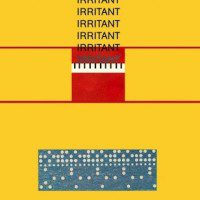Storytelling is often a process of elimination. It becomes an author’s responsibility to peel away her characters’ wide range of experiences (enormous amounts of sensory input, psychological demands, remembrances, and so on) leaving on the page only one thin current of narrative. To some extent the inherent linearity of reading—we can only read one word at a time, more or less—mimics human consciousness by calling our immediate attention away from the millions of other sensory details we’re also collecting while we read and directs it instead to each word, one after the other.
The Danish theorist Tor Nørretranders calls that excluded experiential input exformation. In The User Illusion, he writes: “Exformation is perpendicular to information. Exformation is what is rejected en route, before expression. Exformation is about the mental work we do in order to make what we want to say sayable. Exformation is the discarded information, everything we do not actually say but have in our heads when or before we say anything at all.” By revealing one small part of a character’s experiences, fiction has traditionally attended to information.
Then there’s Darby Larson’s debut novel Irritant. It’s a book that opens the reading experience to a polyphonic array of simultaneous voices and sensations: to our experiential exformation both in the text—or is that texture?—and to the physical world around us while we read. Like Laszlo Krasznahorkai’s novels, Irritant takes the shape one long, breathless, rambling paragraph, but that’s pretty much where the comparison ends. There’s no plot that can summarized here for you here; instead, the narration draws from what seems like both conscious and preconscious experiences. There’s no clear setting but, instead, a sense of geography, a void or space that the irritant—the irr—and other recurring objects move through. Our role as readers is to try to follow along. Some of the objects that arise and organize themselves in different combinations are “clay” and “turq” and “man” and “woman” and “flowerpot” and “sandbag.”
For example: “The man crawled on his elbowthumbs away the blue and the woman stirred and the irr irrd the flowerpot in the front and lay and laughed. And the sandbagged sun and the woken moon washed and clapped for the yawning man standing on the porch holding an envelope.”
You won’t find characters in the typical sense nor any of the other literary devices we’ve come to expect from a book. Instead, we get words. Lots of them, in combinations that no one has ever used before. The repetition and reordering of the same elements resembles a Minimalist composition. Irritant reminds me of the joke:
Knock knock
Who’s there?
Knock knock
Who’s there?
Knock knock
Who’s there?
Knock knock
Who’s there?
Knock knock
Who’s there?
Philip Glass
Instead of relying merely on that one thin thread of conscious action we see in most fiction, Irritant embraces a multitude of experiences all at once. The sentences and sensations just keep pulling into the reader’s attention and then rolling past. It can be as mesmerizing as watching a really long train go by. It’s a book that has taken David Byrne’s postmodernist manifesto Stop Making Sense to heart:
The woman laughed and laughed and nothing was funny so the one who went away took the one who went away and another went south toward the porch. In the piano and the chair and in the flowerpot of it the sandbagged feathers feathered the naked balloon and the weather felt kissed.
I’ve heard it said that a work of art is only called “experimental” if the experiment fails, so I won’t use this term here, but I do get a lovely sense of playfulness here and a willingness on Larson’s part to try new things. The immense pleasure of reading this book comes in a different way. It comes from feeling your brain attend to new processes and from making us more aware of our own exformation.
Larson has effectively opened up the field of possibility for how characterization can work. What makes a novel like Irritant so exciting—not that there are many novels like Irritant—is it widens the range of narrative possibility to include both information and exformation. The effect is absurd and maddening and intoxicating. The book doesn’t make sense in any traditional ways, and that’s entirely the point here. Or one of them.




